Canon EF 16-35 mm f/2.8L III USM
3. Build quality
In the photo below the tested lens is positioned between the Canon EF 35 mm f/2.0 USM IS and the Canon EF 100 mm f/2.8L Macro USM IS.
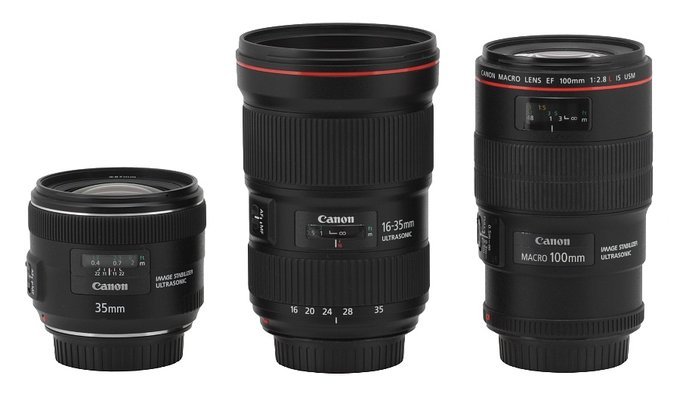 |
Please Support UsIf you enjoy our reviews and articles, and you want us to continue our work please, support our website by donating through PayPal. The funds are going to be used for paying our editorial team, renting servers, and equipping our testing studio; only that way we will be able to continue providing you interesting content for free. |
- - - - - - - - - - - - - - - - - - - - - - - - - - - - - - - - - - - - - - - - - - - - - - - -
The Canon EF 16–35 mm f/2.8L III USM starts with a metal mount which surrounds contacts and a rear element, 26 mm in diameter (what’s interesting the slower Canon EF 16-35 mm f/4L IS USM features a rear element which diameter is by 2 mm larger). The element is positioned on the same level as the mount at 16 mm. When you pass to 35 mm it hides inside the barrel almost 3 cm deep. After that you can have a good look at well-matted and darkened interior of the tube without any traces of shiny screws or electronics.
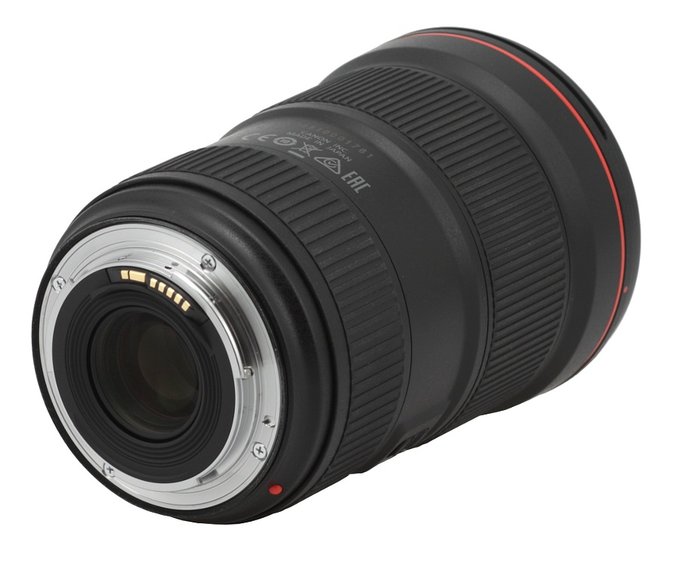 |
The proper body of the lens starts with an immobile, narrow stripe with a red dot, making an alignment with a camera easier. An aperture ring is the next part of the lens; it is as wide as 28 mm, equipped with rubber ribs and focal length marks at 16, 20, 24, 28 and 35 mm. The ring moves evenly and is well damped.
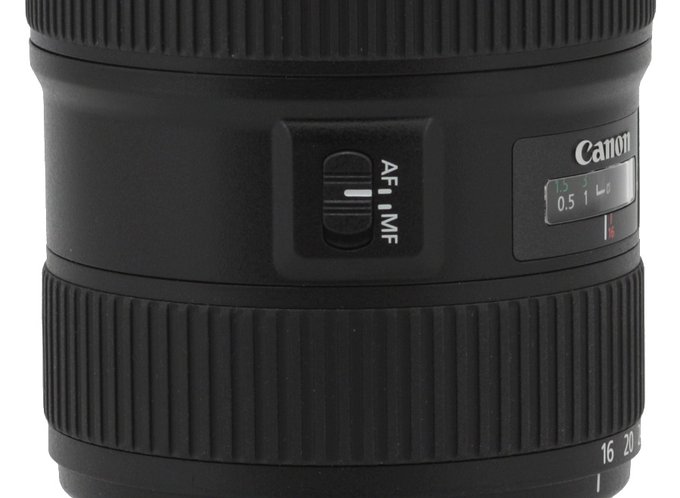 |
Further on you see a distance scale expressed in meters and feet which is positioned behind a window. On the right side of the scale you see an inscription with the parameters of the lens and on the left there are focusing mechanism switches (AF/MF). On the opposite side to the scale you find the serial number of the lens and information that it was produced in Japan.
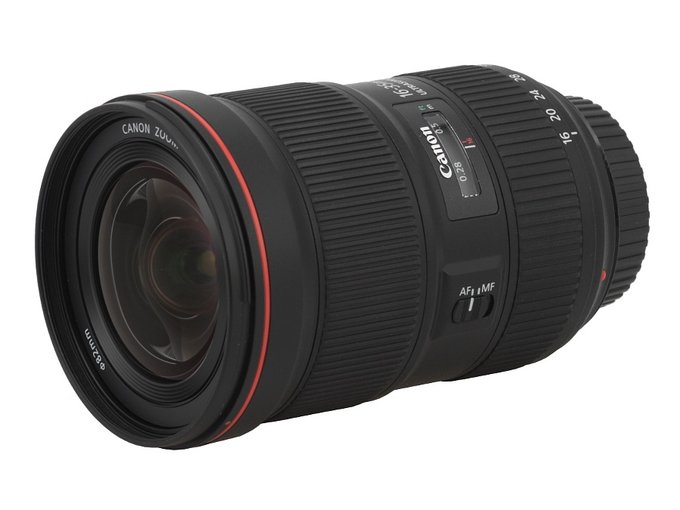 |
A manual focus ring, as wide as 34 mm, ribbed and very comfortable to use, is the next part of the lens. It moves smoothly but with a proper resistance, without any slacks. Running through the whole distance scale needs a turn through an angle of 100-110 degrees. It is an acceptable value, taking into account the depth of field you get with such parameters.
Behind the ring you see a red stripe, characteristic for L-series devices, which turns into a plastic hood mount.
The front element is 56 mm in diameter, surrounded by a filter thread which doesn’t move and is 82 mm in diameter. The element is the closest to the hood mount at the 16 mm focal length and it hides the deepest near 24 mm. Only after attaching the filter you can be sure the lens is completely sealed.
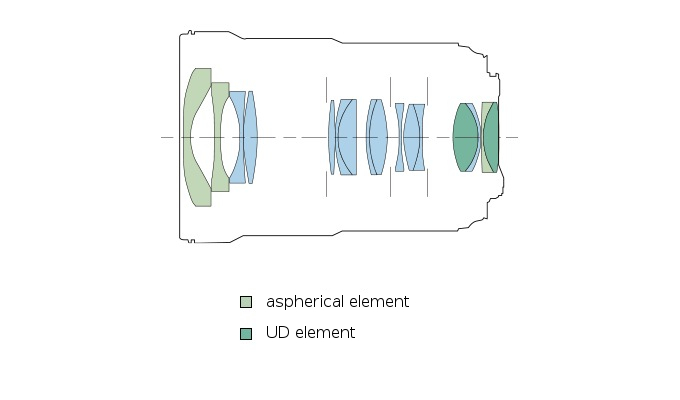 |
When it comes to the optical construction you deal here with 16 elements positioned in 11 groups. Two elements are made of low dispersion UD glass and three others are aspherical. Among the latter you can find two front elements which have a double-sided aspheric design. Inside there’s also a round aperture with nine blades which can be closed down to f/22.
Buyers get both caps, a petal type hood and a soft pouch for the lens in the box.
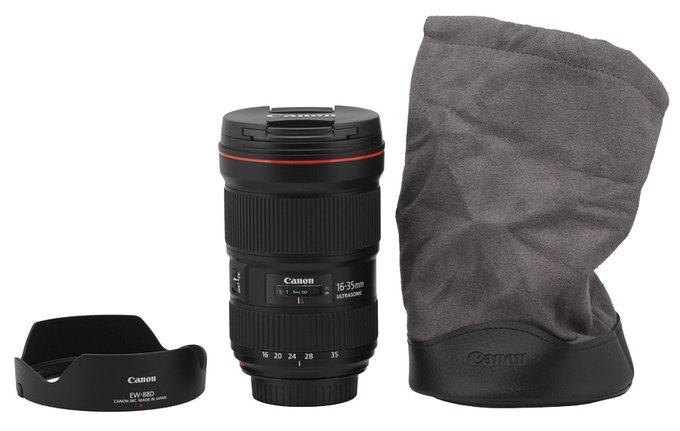 |






